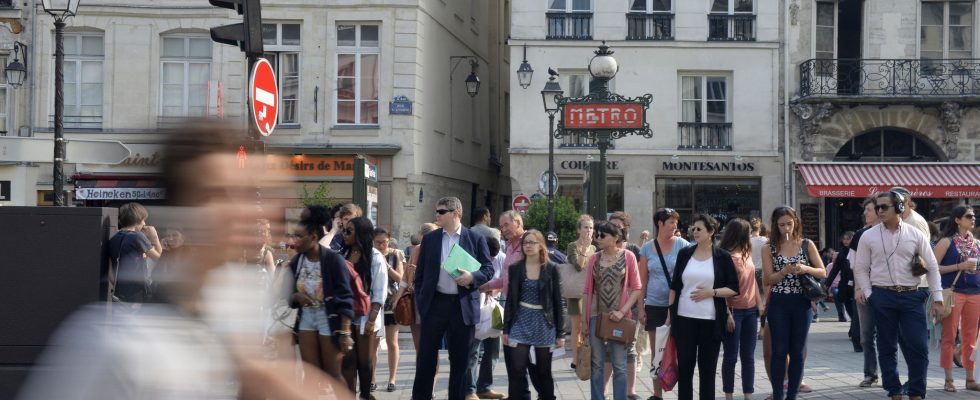The forms and functions of sidewalks change as cities evolve. Specialist in urban economy, Isabelle Baraud-Serfaty is passionate about them. From his historical, sociological and economic peregrinations about these singular pieces of the urban universe, the author analyzes both life in the city and the production of the city. Literate and enthusiastic, she takes us on a journey, passing through ancient Pompeii and the contemporary underground networks which, under the pavement, allow a host of daily uses: sewers, energies, fibre… Quoting Georges Perec, she deciphers these elements “infra-ordinary”.
A real economic asset
The sidewalk is both infrastructure and space. We meet there the pedestrian, the shopkeeper, the ragpicker, the garbage collector, the delivery man, the homeless, the prostitute. It is equipped with special urban furniture: fountains, lampposts, kiosks, toilets. Baraud-Serfaty is interested in its configurations and its associations. She sees the sidewalk as an economic asset allowing the extension of housing and commercial life. She describes the possible advantages of adapting the city to environmental needs, thanks to trees. It is, in a way, a convenience to be better valued. Between the pavement and the base of the facades, the sidewalk becomes a possible extension of the home. Between public and private, it requires inventive modes of operation, for example to capture part of the value created by the deliverers of digital platforms who use them without paying for it.
A public good subject to privatization
The book is teeming with original observations, particularly on peri-urban areas which stand out as “an urban area without sidewalks”. Basically, the sidewalk is a rare resource, for which different uses are in competition: think of parking cars or passing scooters. It is a key resource, paid for by the taxpayer, who finances its operation, and by the purchasers of development operations, who finance the investment. Baraud-Serfaty imagines ways and means to better ensure the economic balance of a place where more and more activities are taking place, ranging from waste management to pizza delivery. Also relating what is happening with private sidewalks and the appropriation of certain public sidewalks, she knows how, with her unusual study, to share her passion. And invites us, by way of conclusion, to a simple exercise: “To read the future of cities: look at the sidewalk.”
Sidewalks! An economic, historical and strolling approach, by Isabelle Baraud-Serfaty.
Apogee, 320 p., 20 euros.
Rating: 5/5
